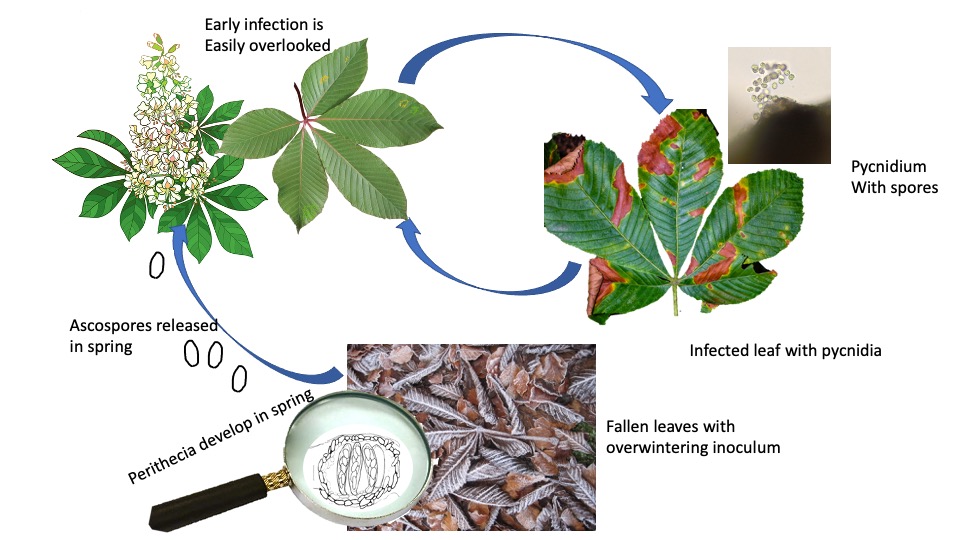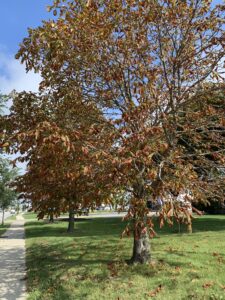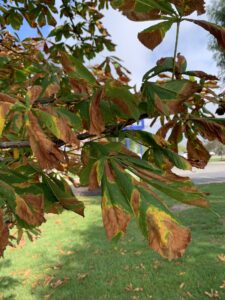Guignardia leaf blotch infects Aesculus species, which include the native plants Ohio buckeye (A. glabra), bottlebrush buckeye (A. parviflora), along with the less common painted buckeye (A. sylvatica) and red (A. pavia) buckeye. The non-native horse-chestnut (A. hippocastanum) is also a susceptible host of this disease (Fig. 1).
- Figure 1.
- Figure 2
Symptoms
The fungus Guignardia aesculi (pronounced Gwin-yard-ee uh) infects the leaves of Aesculus species, causing an irregularly-shaped reddish-brown lesions or ‘blotch’ on leaflets. These blotches are often surrounded by a yellow, chlorotic halo (Fig. 2). Lesions expand and blotches may envelop the entire leaflet. Blotches that occur on the margin of leaves may result in distortion, curling and wrinkling. Unlike many foliar diseases, Guignardia blotch infected leaves often remain attached to the branch.
Careful examination of the leaves will often reveal black, pinhead-sized pustules (pycnidia) that may be readily observed with a hand lens and are a key diagnostic sign of this disease (Fig. 3). These pycnidia serve as a source of spread during the summer and overwintering inoculum on fallen leaves. This asexual state (imperfect) is sometimes referred to as Phyllosticta spp.

Figure 3
Disease Cycle
Leaves are infected mid-spring, just as Aesculus species are blooming. Weeks later, the first symptoms of the disease appear, beginning with discrete lesion appearing on the leaflets. Lesions expand and the fungus sporulates and reinfects whenever weather is wet. The fungus overwinters, undergoing meiosis (sexual recombination) in the spring, releasing ascospores from fallen leaves and repeating the disease cycle (Fig.3). Although dramatic in appearance, the disease has little impact on otherwise healthy trees and shrubs.
Management
Although unsightly, the disease does not impact the overall health of the infected plant. Pruning to open the canopy will increase air circulation, promote drying and prevent some infection. A number of fungicides (Table 1) are labeled for disease management, and will preserve the appearance of specimen trees, but are not recommended or warranted in most instances. Begin applications to prevent prior infection by ascospores prior to bloom and after bloom, followed by one to two additional applications if the weather is conducive for disease (i.e., repeated rainfall with cooler weather).
Table 1


